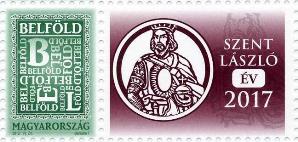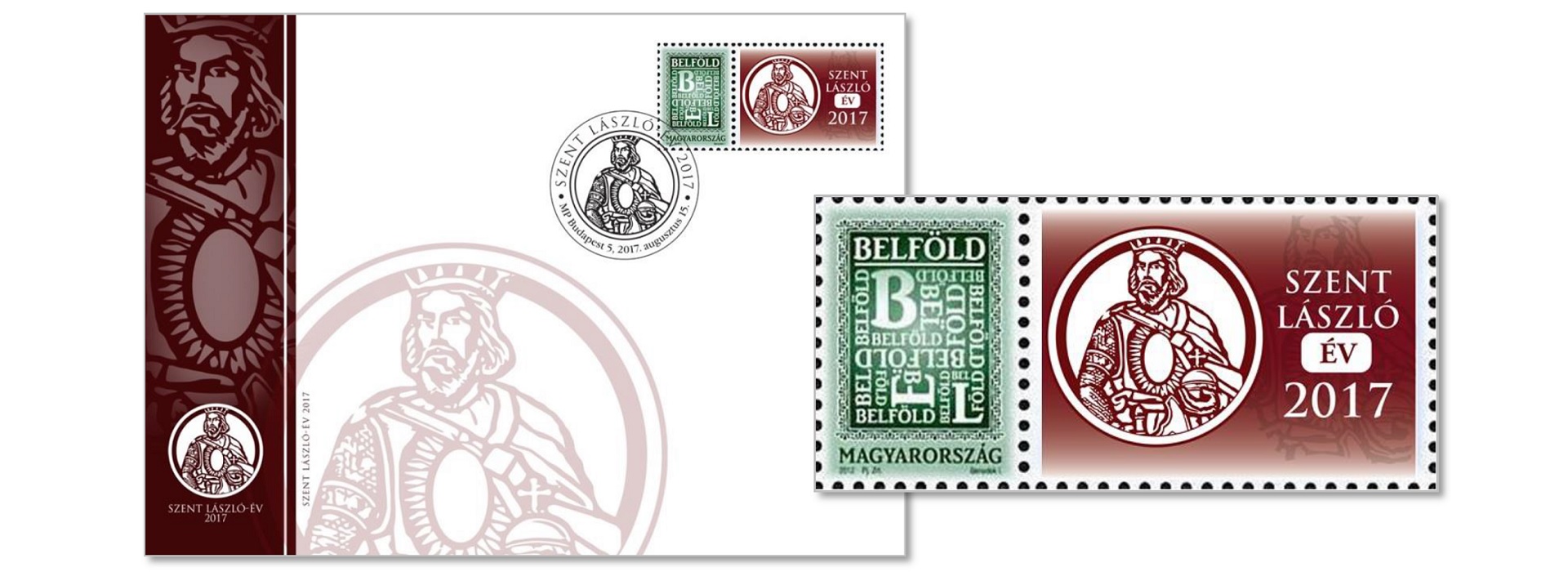Saint ladislaus memorial year
Magyar Posta is issuing a definitive stamp with a label to mark the Saint Ladislaus Memorial Year. The emblem of the Memorial Year can be seen on the label attached to the definitive stamp Your Own Message Stamp IV – Domestic 35. The stamp was designed by Imre Benedek and the label attached to it by Tamás Gábor, and 175,000 copies were produced by the printing company Pénzjegynyomda. The new issue will be available at first day post offices and Filaposta in Hungary from 15 August, but may also be ordered from Magyar Posta’s online store.
 (Saint) Ladislaus I (c.1040, near Cracow – 29
July 1095, Nyitra) was the second son of King Béla I of Hungary and Princess
Richeza Piast of Poland. He was King of Hungary from 1077 and King of Croatia
from 1091 until his death, and was a ruler embodying the medieval ideal of
chivalry, who gained distinction in the areas of law-making, church
organisation and warfare during his 18-year reign. A number of legends
commemorate him.
(Saint) Ladislaus I (c.1040, near Cracow – 29
July 1095, Nyitra) was the second son of King Béla I of Hungary and Princess
Richeza Piast of Poland. He was King of Hungary from 1077 and King of Croatia
from 1091 until his death, and was a ruler embodying the medieval ideal of
chivalry, who gained distinction in the areas of law-making, church
organisation and warfare during his 18-year reign. A number of legends
commemorate him.
The 2017 Saint Ladislaus Memorial Year commemorates the 940th anniversary of the knight king’s accession to the throne and the 825th anniversary of his canonisation. The aim of the Memorial Year is to draw attention to Saint Ladislaus joining the nations of Central Europe together in the spirit of Christian unity. Ladislaus is a strong bond between the peoples of Central Europe as he was born in Poland, is the patron saint of Transylvania, was the founder of the see of Zagreb and died in Nyitra (today Nitra, Slovakia). The Memorial Year provides an occasion for the states of the region to nurture effective cooperation based on historic traditions.
The circumstances of his becoming king were to a large extent determined by the fact that at the end of the 11th century the right of succession to the throne of the first-born son was not clear among Hungarian monarchs, and thus succession was often decided by conflict between potential heirs. While he was still a duke, Ladislaus supporting his father Béla and later his brother Géza played an important role in their coming to power. At the start of his reign, Ladislaus had to consolidate power against the son of Andrew I, Solomon.
During his reign he was noted not only for his achievements as a military leader but also for introducing three legal codes that on the one hand strove to secure the position of Christianity and on the other to protect property. Saint Ladislaus also recognised that the first missionary period of the Hungarian Church has ended, and for this reason he had the individuals who played an outstanding role in Christianisation canonised in 1083: the founder of the state, King Stephen, and his son Prince Emeric, Gerard, Bishop of Csanád, and two hermits on Mount Zobor, Andrew and Benedict. This process reinforced his foreign policy concept in which the Kingdom of Hungary had a rightful place in the community of Christian states by virtue of the country’s own independent saints. Through his endowments, new foundations and continuing development of the episcopal structure, he built and strengthened the Church in Hungary.
The reign of Ladislaus I was crucial for the Hungarians because he made Hungary a powerful state and an influential factor in Europe. It was then that the dream of Stephen I, a Christian Hungary, became a reality. Overcoming the crisis, secular and ecclesiastical organisations were set up in the outlying areas, attacks by the Pechenegs (Cumans) were repelled and, pursuing an active foreign policy in his last years, the acquisition of the Croatian crown marked a major success in this area. This enabled the Kingdom of Hungary to become an important influence in the power relations of the region.
On 27 June 1192, Béla III, with the pope’s
blessing, canonised his famous predecessor and prepared a reliquary for his
remains, whose successor is now held in Győr cathedral. This is Hungary’s third
most precious national relic. Ladislaus I of the House of Árpád is still
considered to be one of the country’s most important kings. His tomb in
Nagyvárad (today Oradea, Romania) has been a place of pilgrimage in Europe for
centuries. Among others, the King of Hungary and Holy Roman Emperor Sigismund
of Luxemburg asked to be buried next to Saint Ladislaus. His memory is
preserved by the names of countless institutions, places and statues.
Sources: Ferenc Glatz (ed.): A magyarok krónikája, Budapest 1995; László Koszta: Válság és megerősödés 1038-1196, Budapest 2009; www.rubicon.hu; www.wikipedia.org



